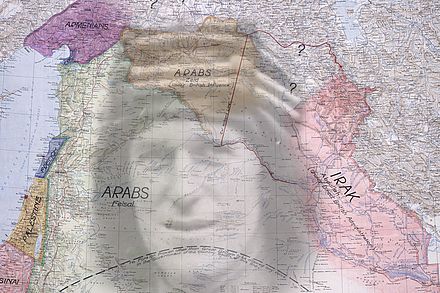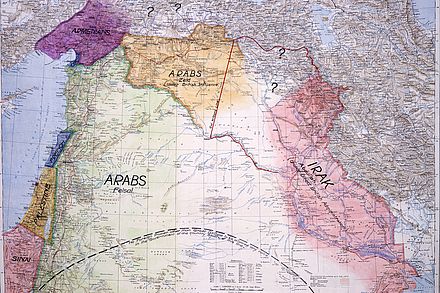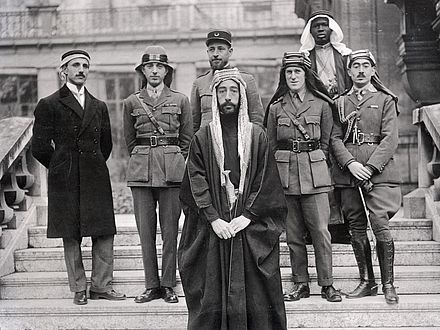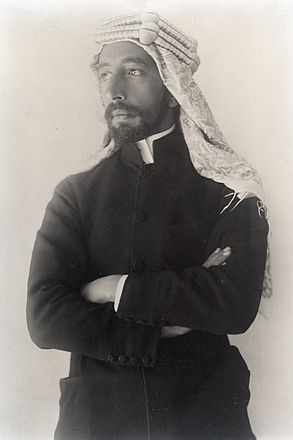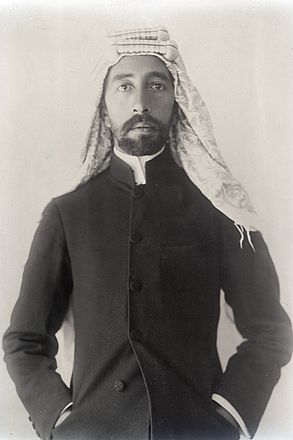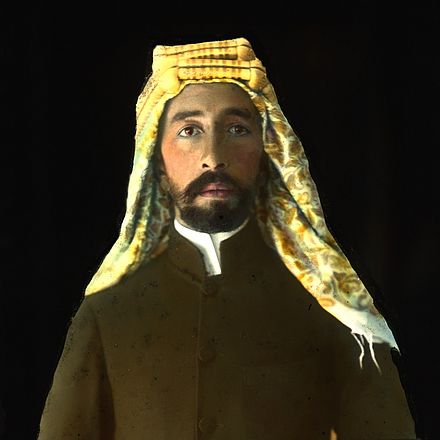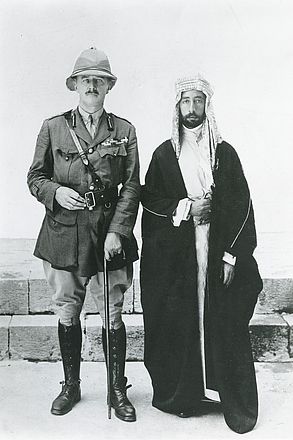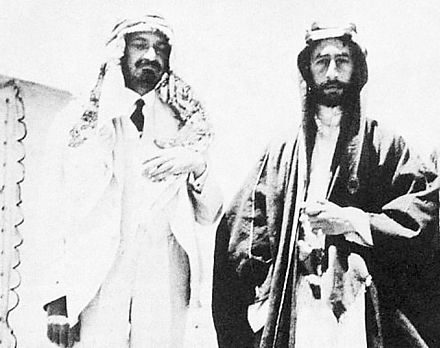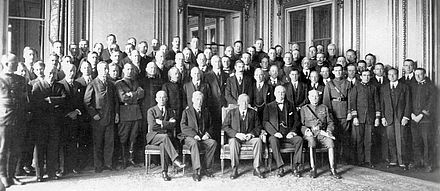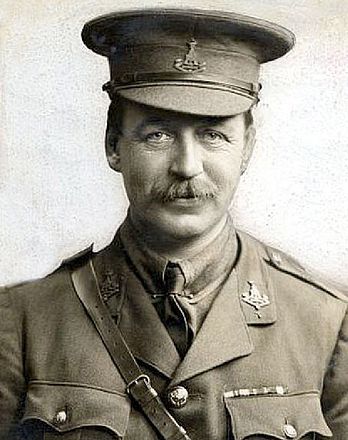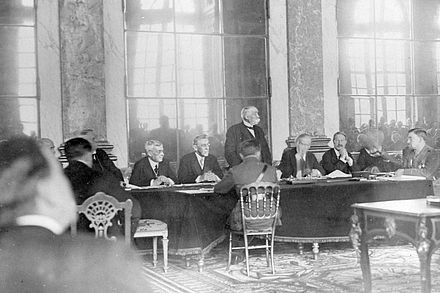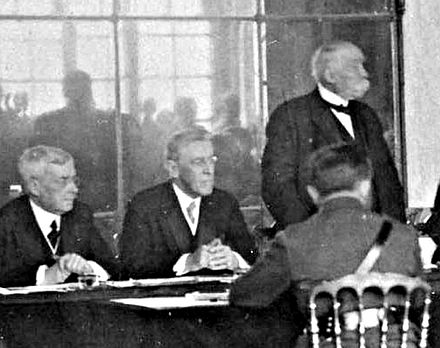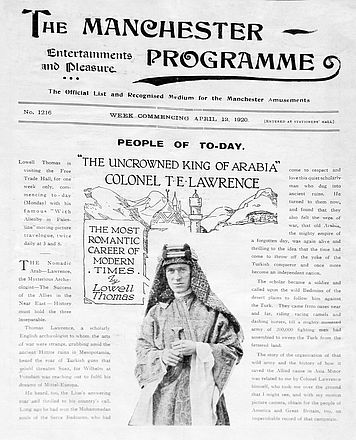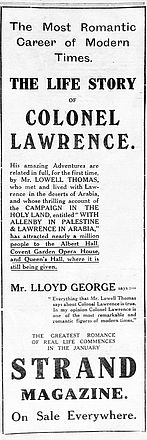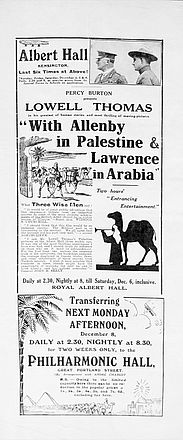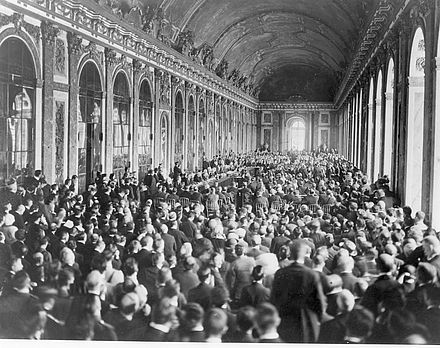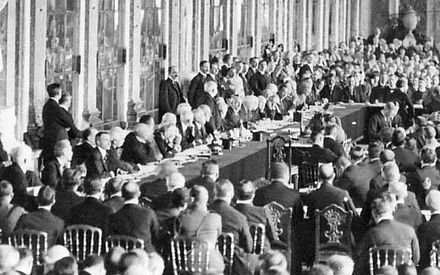Certainly one of the more unusual sights at the peace conference called to redraw the map of the world after the First World War was the member of the British delegation walking around Versailles in Arab robes. It was at the Paris Peace Conference from January to June 1919 that T.E. Lawrence would push forward his campaign for Hashemite Kingdoms.
After the end of the World War I, T.E. Lawrence harbored an overriding political goal: overturning the secret 1916 Sykes-Picot Agreement through which Britain and France, allies in the war, had arranged to carve up the Near East after war. France would be granted Syria and Lebanon, Britain would rule Mesopotamia and Palestine. The Arabs, with whom Lawrence had fought and to whose cause he was dedicated, would get full control of nothing.
Lawrence’s military success during the war had won him a hearing in Britain. He had expounded on his hopes for Arab sovereignty before a committee of the War Cabinet and in a memorandum for the War Cabinet. He had written anonymous articles on the subject for the Times of London. He had even met with the king, George V. At this meeting, Lawrence caused a minor scandal by refusing to accept the medals the king wanted to award him because, Lawrence said, of his shame that he had participated in betraying the Arab cause and his outrage at the Sykes-Picot agreement.
Lawrence encouraged Prince Feisal to come to the Paris Peace Conference at Versailles to represent the Arab cause, and the British War Cabinet designated Lawrence to work with him. “Lawrence’s real achievement in his two years with the Arabians in the World War,” argues the historian David Fromkin, “was to invent a role for [the] small band” of Arabs under the leadership of King Hussein and his son Feisal. Lawrence did not “invent” the Arab Revolt, but he certainly played a major role in trumpeting it and that revolt’s importance to the war effort. After all, the British had about a million men fighting the Turks; the Arabs offered only about 3,500. Certainly Lawrence’s support for the political aspirations of Hussein, Feisal and their family — the Hashemite monarchy — was crucial, as Fromkin argues. And Fromkin also suggests that the British may not have been all that upset to see Lawrence challenging the deal they had made giving control of Syria to France.
Lawrence shepherded Feisal around Britain before the conference. He even arranged a meeting between Feisal and Chaim Weizmann, the Zionist leader who would become, decades later, the first president of Israel. They signed an agreement — extraordinary considering the later history of these two peoples — respecting each other’s rights and agreeing to work “in accord and harmony at the Peace Conference.” Lawrence succeeded in winning some backing for Feisal in Britain and was himself to go to the Paris Conference officially as a technical advisor to the British delegation, but unofficially as an advisor to Prince Feisal.
American journalist Lowell Thomas also passed through Paris during the conference. He had been reporting on the post-war chaos in Germany and stopped to brief the American delegation on what he had seen. Thomas then sailed for America, where he would try to figure out what to do with the stories, films and glass plates he had collected during his eighteen months covering the war. The multimedia show Thomas would end up producing on Lawrence was still months off — and consequently, Lawrence’s public fame was yet to be fully realized.
Yet Lawrence called enough attention to himself in Versailles as he walked around with Prince Feisal in flowing Arab robes. Lawrence was the only member of the British delegation — which included Sir Mark Sykes, one of the authors of the Sykes-Picot Agreement — committed to Arab independence. The only woman to have any significant role in the peace settlements, Gertrude Bell, arrived in Paris on March 7, 1919, to promote the Arab cause. Immediately she joined with Lawrence and Feisal and was “swept up at once in the frenzy” of their efforts. While Bell came to call Lawrence her “beloved boy” others in the British delegation were offended by Lawrence’s “ambiguous position”: working for the British and also with the Arabs.
Lawrence helped Prince Feisal eloquently present the Arab point of view at Versailles. The prince read a speech in Arabic, apparently written by Lawrence, to the leaders of the Allied powers. Then Lawrence read it in English. And when the American President, Woodrow Wilson, noticed that some of the Europeans did not understand, Lawrence provided an impromptu translation of the speech into French. Lawrence hoped that the Americans, at least, would be sympathetic. But in the end the Arab point of view was mostly ignored.
“The whole history of the Middle East in the half century between 1919 and 1969 is a history of the undoing of the work of the Paris Peace Conference of 1919 and the settlements made after the First World War.”
—Jon Kimche, Swiss journalist and author
The Sykes-Picot Agreement was honored at the Paris Peace Conference. France — not Prince Feisal, his father King Hussein or any other Arabs — gained control of Syria. Lawrence was deeply disappointed. But, thanks to Lowell Thomas, his fame and therefore his influence would increase. Lawrence would get another opportunity to influence the future shape of the Middle East — two years later in Cairo.


